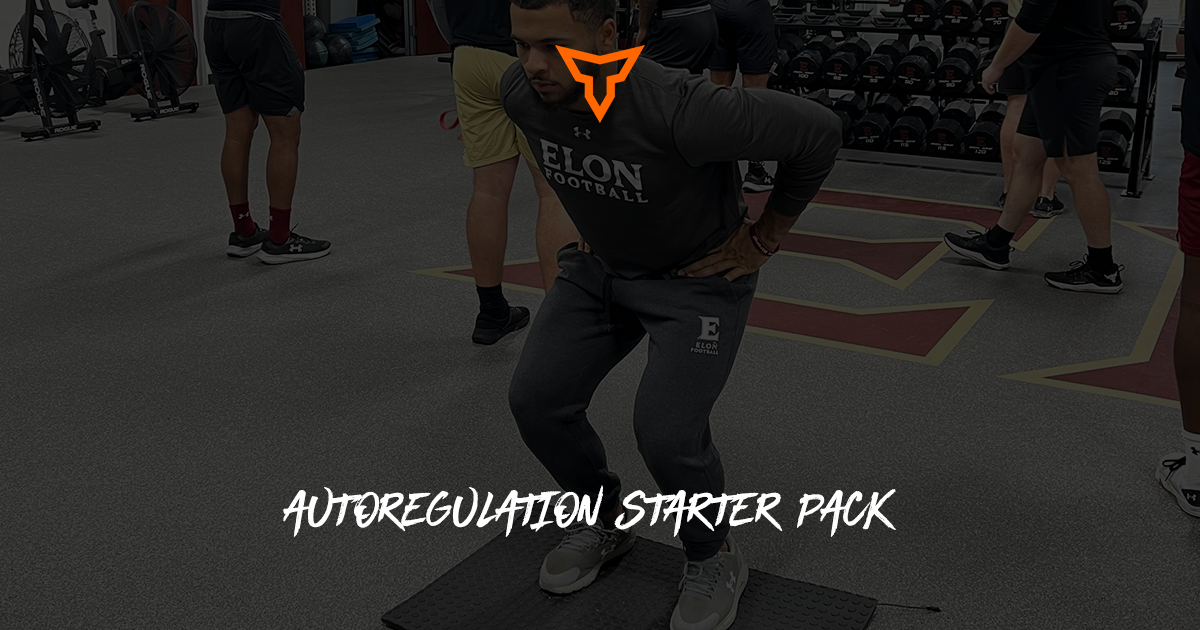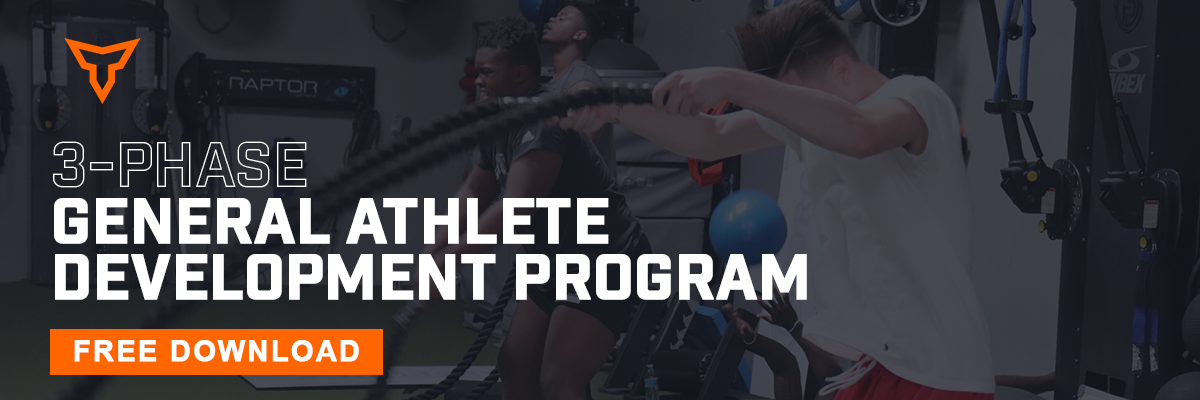Assessing Athletes: What Are You Missing?
Imagine for a moment you are standing in a dark room. The room is pitch dark with no visual reference to orient yourself. From your pocket, you pull a small flashlight. You turn it on, and the light reveals the nuances of a measly, inadequate portion of the wall to your front. You can see a picture; the paint color and the texture is apparent. While you can now make some assumptions about the remainder of the room, in truth, you remain curious about the contents, size, and condition of the rest of the space.
That is how I feel when assessing athletes.
The dark room analogy has never been more apparent than in the last four years of my career. In that time, I met two Bills. No, not Bill Belichick and Bill Parcels as the ESPN documentary The Two Bills portrays. My two Bills are Bill Sands and Bill McDermott. Two world-class sports scientists and even better humans. Much of what you are about to read is shaped by my conversations, collaborations, and the myriad of questions posed with these superlative professionals.
As you continue to read, I urge you to reflect on your monitoring and assessment practices. Do you make inferences beyond the scope of the chosen assessment, tool, or methods? Are the assessments, tools, and methods you employ providing you with useful contextual information?
I know I have made some far-reaching assumptions. Perhaps wrongfully so.
The information and story below represent a single case study but applied thousands of times over the past 30 years. Nothing here is new. Perhaps just not at the forefront of our minds as performance coaches.
The Tools
Force Plates
Today, force plates seem to be everywhere and are capable of meeting virtually every need. They are portable and stationary, large and small, and embedded in the ground, atop a platform, or integrated into treadmills. They are now accessible and affordable (mostly), and many coaches are capable of operating them, interpreting the data, and making appropriate prescriptions.
Fundamentally, force plates are effective for examining the kinetic characteristics of an athlete’s movement. They provide the capability to quantitatively evaluate the athlete’s execution of a specific skill (jumping, landing, squatting, etc.) and physical development (force, power, velocity, RFD, etc.).
Force plates capture data at various frequencies with the most common and widely accepted minimum frequency of 1000Hz to capture human motion. Force plate data in the case below is captured at 3000Hz.
It is imperative to note that force plates provide data on the summative forces contributed by all involved tissues and joints as the athlete interfaces with the platform. As a coach, we need to know that this is the portion of the wall the flashlight illuminates, nothing more, nothing less.
3-D Motion Capture
Motion capture is the process of recording the movement of objects or people. A tool in biomechanics research since the 1970s, 3-D motion capture is characterized by the placement of reflective sensors on the athlete’s body, a subsequent recording of the athlete’s movement(s), and the digitization of the athlete in three dimensions (image right).
The ability to capture athlete motion is accomplished in many ways by today's practitioners. Some approaches include the simple camera phone and app, inertial motion capture (IMU), and the reflective passive optical system, shot at 300fps with 10 HD cameras, employed in this case.
The Trade
Biomechanists and sports scientists combine the use of the tools above using a process known as inverse dynamics to compute the forces and moments of force based upon the kinematics of the athlete’s body and external forces such as ground reaction forces.
Using this process, we can then differentiate and quantify the contributing joints to the overall movement through the entire range of motion, regardless of the movement profile or type.
Imagine taking your force plate, which provides a summation of forces, and looking through a microscope for a closer look into the contributions of the joints at specific points in the movement. The deeper look is what is called prescriptive gold. You have to dig for it, but it’s exceedingly valuable.
The Application
In this particular case study, we look at an athlete who is greater than 24-months postoperative for Anterior Cruciate Ligament Reconstruction (ACLR) on the left knee. *Please note the entire assessment occurs over 15 separate movements. For the purposes of length only a few of the most common and accessible tests are included.*
Kinematically, this athlete is a well-accomplished mover, showing no visual compensatory patterns across several foundational, intermediate, and advanced movements. Additionally, using cameras shooting at 300fps, we could not identify anything that might draw our attention to any issue related to kinematics or contributing to the underlying kinetic dysfunction.
Using a force plate, we can quickly determine if inter-limb asymmetries exist in several metrics. The collection and analysis of symmetry data are vital as there is a plentiful supply of literature expressing the importance of addressing excessive asymmetries in our performance prescriptions and coaching. The impact of inter-limb asymmetry on performance is seen in running, jumping, kicking, and cycling, among others. Similarly, previous research has highlighted discrepancies surrounding asymmetries and injury risk. With a threshold of 15% commonly suggested for increased injury risk, many care providers and practitioners strive for <10% during the rehabilitation process.
Using data from the force plate, this athlete has met the <10% threshold in all tabulated symmetry metrics, including a return to baseline (or beyond) in all performance output metrics (force, velocity, power, etc.).
In the isometric squat, performed at 90 degrees of knee flexion, the athlete displays a peak vertical force asymmetry of 1.35%, favoring the right leg (image below).
When performing the static jump (squat jump or SJ), the athlete again displays a level of symmetry that meets the generally accepted threshold of <10%. Notable metrics here include (image below):
- Takeoff Peak Force Asymmetry: 4.5%
- Phase 1 Concentric Impulse Asymmetry: 0.6%
- Phase 2 Concentric Impulse Asymmetry: 6.0%
- Concentric Mean Force Asymmetry: 3.8%
- Concentric Rate of Force Development Asymmetry: 2.9%
Finally, when performing the counter movement jump (CMJ), the athlete once again meets the <10% threshold. Notable metrics in the CMJ include (image below):
- Eccentric Peak Force Asymmetry: 0.4%
- Concentric Peak Force Asymmetry: 0.4%
- Eccentric Impulse Asymmetry: 0.5%
- Phase 1 Impulse Asymmetry: 2.3%
- Phase 2 Impulse Asymmetry: 8.2%
- Eccentric Braking Impulse Asymmetry: 0.8%
- Concentric Rate of Force Development Asymmetry: 5.6%
Given all this incredible information, the kinetic evaluation showing exceptional movement quality, and the glowing kinetic evaluation from the force plate, we assume we are good to go. At least that’s what I thought. Why wouldn’t I? My coaching eye couldn’t pick up anything that stood out, nor could the current technology I was utilizing.
But, as Lee Corso famously states, every Saturday morning on College Gameday, “NOT SO FAST, MY FRIEND!”
When combining the 3-D motion capture and the force plate data, we could grasp an oversized flashlight and illuminate more of the room. We could peer through the microscope for a deeper look at the joint contributions through these movements, and here is where the prior information was deceiving.
Without my knowledge and the ability to see it - the athlete had altered how they solved these motor problems!
On the left leg (surgical leg), they had abnormal limb kinetics at the joint level. In this case, the knee extensor moment and joint torque were altered by over two standards deviations compared to a healthy control.
In the static jump (image below), what presents itself as Phase 1 Concentric Impulse Symmetry is a significant effort by the left hip to make up for the lack of work performed at the knee. We see a similar compensation in Phase 2 with a similar effort at the ankle. When taken in summation, all appears well. But clearly, we have some work to do.
The alteration in the joint kinetics shouldn’t have surprised me. We know that athletes are “master compensators.”
But why is this important? Could this be the new normal?
I would argue it shouldn’t be. An ever-growing body of research shows intra-limb compensations such as those displayed above contribute to increased risk of injury and associated degenerative issues in cartilage and meniscal abnormalities. Furthermore, research indicates that intra-limb compensations set in early and can last ten years or more, making it essential for us as performance coaches to acknowledge and act. We can get more into this in another article!
The lesson here, presume you need more information. Use the tools at your disposal for their intended purpose then, dig further when it’s prudent.
Unknowingly, over 20 years ago, I walked into a pitch dark room with a small flashlight. Let me be among the first to welcome you to the room of uncertainty. Bring your flashlight.
Bibliography
Beckham, G., Suchomel, T., & Misuguchi, S. (2014). Force Plate Use in Performance Monitoring and Sport Science Testing (Vol. 3). New Studies in Athletics. 4/20/21
Bishop, C. (2017, 7 14). Effects of Inter-Limb Asymmetries on Physical and Sports Performance: A Systematic Review. Journal of Sport Sciences, 36(10), 1135-1144. 4/20/21
Bishop, C. (2018). Training Methods and Considerations for Practitioners to Reduce Inter-Limb Asymmetries. Strength and Conditioning Journal, 2(40), 40-46. 4/20/21
Glaeser, C. (2018, 7 9). A Buyer's Guide to 3-D Motion Capture Systems for Sport. www.simplifaster.com. Retrieved 4 20, 21, from https://simplifaster.com/articles/3d-motion-capture-sport/
Palmieri-Smith, R., & Lepley, L. (2015, 4 16). Quadriceps Strength Asymmetry After Anterior Cruciate Ligament Reconstruction Alter Knee Joint Biomechanics and Functional Performance at Time of Return to Activity. The American Journal of Sports Medicine, 43(7), 1662-1669. 4/21/21
Shimizu, T., Markes, A., Samaan, M., Tanaka, M., Souza, R., Li, X., & Ma, B. (2020, 1 23). Patients With Abnormal Limb Kinetics at 6 Months After Anterior Cruciate Ligament Reconstruction Have an Increased Risk of Persistent Medial Meniscal Abnormality at 3 Years. Orthopaedic Journal of Sports Medicine, 8, 1-9. 4/21/21
Sigward, S., Chan, M.-S., Lin, P., Almansouri, S., & Pratt, K. (2018, 8 31). Compensatory Strategies That Reduce Knee Extensor Demand During a Bilateral Squat Change From 3 to 5 Months Following Anterior Cruciate Ligament Reconstruction. Journal of Orthopaedic and Sports. Physical Therapy, 48(9), 713-718. 4/21/21Your blog post content here…
Subscribe to our blog
Subscribe to receive the latest blog posts to your inbox every week.
Related posts

Autoregulation Starter Pack

Phase 1 Wearables Integration: Enhancing TeamBuildr


